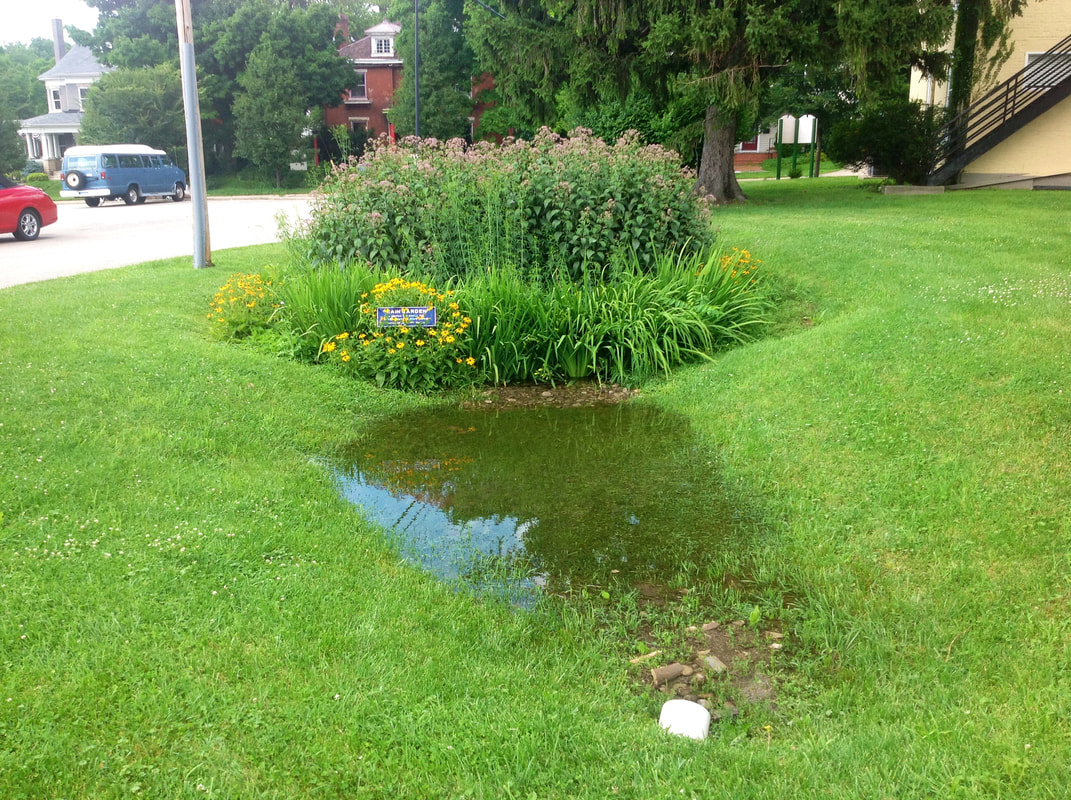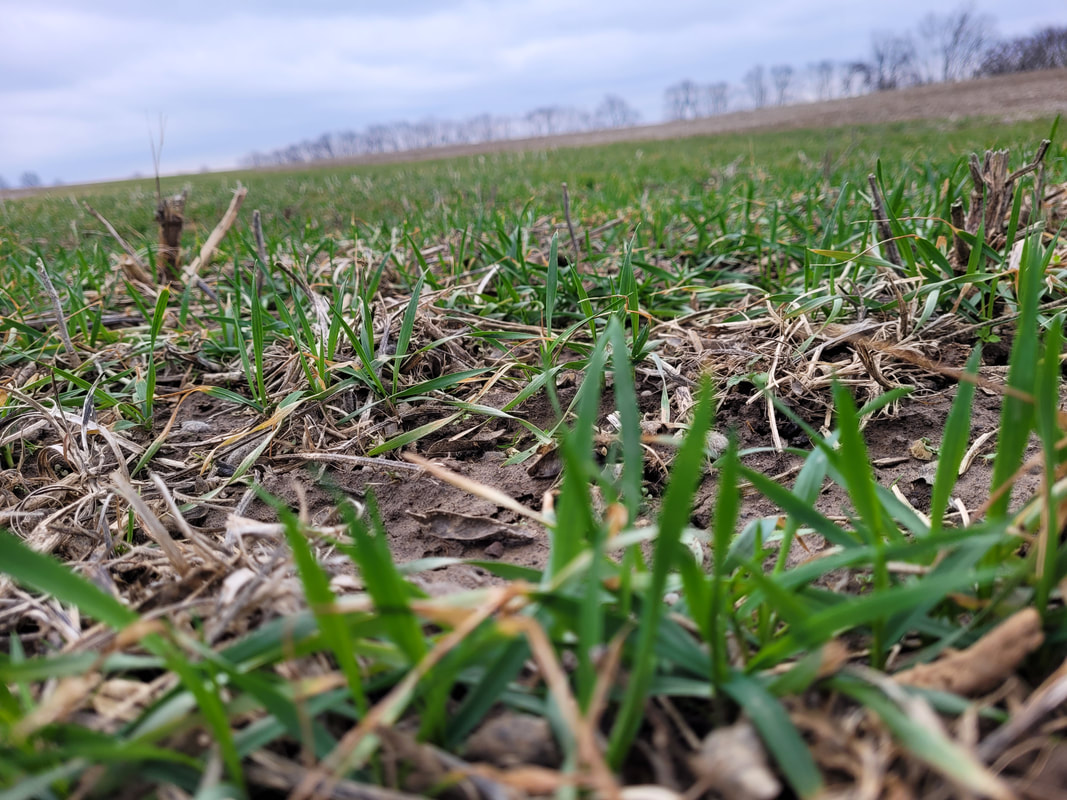|
What does it mean to make your home green for stormwater? Green stormwater practices around your home use plants, soils, and other elements to manage water quality and mimic the natural water cycle. Green stormwater practices retain, detain, filter, harvest, and infiltrate stormwater runoff to create healthier urban environments.
Incorporating green infrastructure provides many benefits such as improving water quality by removing pollutants, habitat preservation for native plants and animals, decreasing urbanization stream impacts, and overall enhancement of neighborhood aesthetics. The following is a list of management practices that landowners can incorporate on their own property to help control and keep stormwater clean. (Sources: Penn State Extension, United States Environmental Protection Agency)
For more information regarding green infrastructure for the home, Warren County Soil and Water Conservation District programs and/or technical assistance on water or soil questions, visit http://warrenswcd.com or call, 513-695-1337.
1 Comment
The inclusion of cover crops in a cash crop rotation can have huge benefits to soil fertility and productivity, while at the same time protecting waterways from excess nutrient runoff.
Nitrogen Production Cover crops, specifically legumes, can create plant available nitrogen (NH3) from nitrogen gas (N2) which is readily found in the Earth’s atmosphere. Legumes create nitrogen through a symbiotic relationship with the bacteria, Rhizobium. Rhizobia infects the legumes root hairs; the bacteria receive its required sugars and vital nutrients while the host legume receives the excess plant available nitrogen. It is estimated that one-half of the NH3 created becomes available to the subsequently planted crop, approximately 1-2 months after the legume has been terminated. Nutrient Scavenging A common concern in modern agriculture both by farmers and water quality experts is the amount of applied nutrients that are left on the field after cash crops have been harvested. In a typical cash crop rotation, crop ground can lay fallow for several months giving nutrients the correct conditions to rapidly exit the field. In the scenario where a cover crop is established rapidly after or even before harvest, these leftover nutrients in the soil are taken up by the cover crop. Nutrients are safely stored until the cover crop is terminated and the nutrients can again be made available for a cash crop or remain as organic matter. This both reduces the amount of excess nutrients entering waterways, but also keeps farmer’s dollars (spent on fertilizer) in the field where it is an asset for future cash crops. Soil Builder – Compaction Breaker Cover crops also stand to improve soil quality and composition. Most notably the life cycle of a cover crop dictates that it is not harvested at termination. In this scenario the organic matter from the terminated crop all remains in the field and over time will increase the amount of organic matter of the top soil. Organic matter is an important aspect of soil health; it directly correlates to fertility in that a nominal amount of organic matter will: provide food for the soil’s microbial ecosystem, improve water infiltration and holding capacity, and enhance its ability to hold onto and supply nutrients to growing crops. Specific cover crops can also be a vital tool against compaction. The ever-increasing size of agricultural machinery is cause for concern regarding the compaction of productive soils. Cover crops which have deep roots can penetrate deep into the ground, improving soil permeability, which in turn increases water infiltration and aeration. Additionally, specific cover crops which have large taproots can break through hard pans and compacted layers of soil. This creates macropores for future cash crop root growth. Erosion Prevention Perhaps the most well-known benefit of cover cropping is the claim that planting a cover crop reduces erosion. The crop is physically “covering” the soil and shields it from both wind and water erosion. A 6mm raindrop is traveling up to 20 mph when it impacts the surface. The drops impact on the soil displaces soil particles and starts the process of erosion. Shielding bare soil with a cover crop keeps soil in place and retains the structure of the topsoil. Live roots along waterways and areas that carry water during heavy rains also help keep soil aggregates stationary during wet season rains. Additional Benefits Cover crops can provide weed suppression benefits. This is typically done by out competing or overshading growing weeds. Additionally, some species of cover crops have the ability to release substances and chemically inhibit the growth of surrounding plants (i.e. cereal rye, sunflowers and buckwheat). Cover crops if managed properly and planned accordingly can also provide grazing and forage opportunities to growers who also manage herds of livestock. Program Opportunity: To learn more about the benefits and types of cover crops for southwest Ohio, please join the Warren County Soil and Water Conservation District for the annual Agriculture Conservation Breakfast on February 24th from 8:30AM-11AM at the Countryside YMCA Events Center, 1699 Deerfield Road, Lebanon. This program is free, but registration is required. To register, please go to warren.swcd.com or call, 513-695-1337. Additional Resources: Rain or Shine (https://open.library.okstate.edu/rainorshine/chapter/5-3-raindrop-impact/) Cover Crop Farmers of Southwest Ohio (https://clermontswcd.org/wp-content/uploads/sites/23/2017/12/covercropfarmers.pdf) Cover Crops for Southwest Ohio (https://fairfieldswcd.org/wp-content/uploads/2017/02/SWOhioCover-CropBooklet.pdf) Ohio Cover Crops (https://cfaes.osu.edu/features/ohio-cover-crops) |
Details
Warren County SWCD Staff BlogA blog to keep you informed on all the latest news at Warren County SWCD and in the conservation world. Archives
May 2024
Categories
All
|
|
|
Contact:PHONE: (513) 695 - 1337
EMAIL: [email protected] HOURS: Monday - Friday 7:30am - 4:00pm (except holidays) Connect:Warren County Soil & Water Conservation District Copyright © 2016
Warren SWCD Privacy Notice. Emails are serviced by Constant Contact. Constant Contact's Privacy Notice. |



